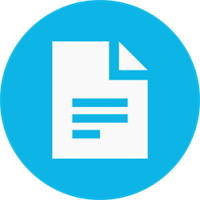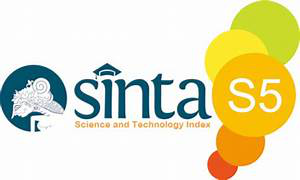Pengaruh Akun Kedua Instagram Terhadap Keterbukaan Diri Mahasiswa
Abstract
Abstrak
Penelitian ini memiliki tujuan untuk mengetahui bagaimana penggunaan akun kedua Instagram (second account Instagram) mempengaruhi tingkat keterbukaan diri (self-disclosure) pada Mahasiswa Ilmu Komunikasi UIN Sunan Ampel Surabaya (UINSA). Analisis utama dalam desain penelitian kuantitatif ini adalah regresi linier sederhana. Dengan bantuan model purposive sampling dan teknik non-probability sampling, 136 mahasiswa UINSA saat ini yang mengambil Program Studi Ilmu Komunikasi dimasukkan dalam sampel penelitian, dengan responden yang terkumpul sebanyak 71 responden. Kuesioner yang dirancang berdasarkan indikasi kedua variabel penelitian diperlukan bagi responden. Berdasarkan hasil analisis data menggunakan IBM SPSS Statistics 26, responden Mahasiswa Ilmu Komunikasi UINSA menunjukkan bahwa variabel second account Instagram (X) berpengaruh signifikan sebanyak 20,2% terhadap tingkat self-disclosure (Y). Sementara itu, tingkat self-disclosure (keterbukaan diri) Mahasiswa Ilmu Komunikasi UINSA dipengaruhi secara signifikan oleh penggunaan second account Instagram.
Kata Kunci: Akun Kedua (Second Account) Instagram; Keterbukaan Diri
Abstract
This study aims to determine how the use of second account Instagram affects the level of self-disclosure in Communication Science Students of UIN Sunan Ampel Surabaya (UINSA). The main analysis in this quantitative research design is simple linear regression. With the help of purposive sampling model and non-probability sampling technique, 136 current UINSA students who take Communication Science Study Program were included in the research sample, with 71 respondents collected. A questionnaire designed based on the indications of both research variables was required for the respondents. Based on the results of data analysis using IBM SPSS Statistics 26, UINSA Communication Science student respondents showed that the second account Instagram variable (X) had a significant effect of 20.2% on the level of self-disclosure (Y). Meanwhile, the level of self-disclosure of UINSA Communication Science Students is significantly influenced by the use of second account Instagram.
Keywords: Second Account Instagram; Self-disclosure
Keywords
References
Bazarova, N. N., & Choi, Y. H. (2014). Self-disclosure in social media: Extending the functional approach to disclosure motivations and characteristics on social network sites. Journal of Communication, 64(4). https://doi.org/10.1111/jcom.12106
Chairunnisa, S., Krisna Marpaung, F., & Rangkuti, D. A. (2020). Pengaruh insentif, komunikasi dan budaya organisasi terhadap kinerja pada PT Sinar Graha Indonusa. Jurnal Warta Edisi, 63, 1829–7463.
Cheung, C., Lee, Z. W. Y., & Chan, T. K. H. (2015). Self-disclosure in social networking sites the role of perceived cost, perceived benefits and social influence. Internet Research, 25(2). https://doi.org/10.1108/IntR-09-2013-0192
Child, J. T., & Starcher, S. C. (2016). Fuzzy Facebook privacy boundaries: Exploring mediated lurking, vague-booking, and Facebook privacy management. Computers in Human Behavior, 54. https://doi.org/10.1016/j.chb.2015.08.035
Christine, D., Wijaya, J., Chandra, K., Pratiwi, M., Lubis, M. S., & Nasution, I. A. (2019). Pengaruh Profitabilitas, Leverage, Total Arus Kas dan Ukuran Perusahaan terhadap Financial Distress pada Perusahaan Property dan Real Estate yang Terdapat di Bursa Efek Indonesia Tahun 2014-2017. Jesya (Jurnal Ekonomi & Ekonomi Syariah), 2(2), 340–350. https://doi.org/10.36778/jesya.v2i2.102
Dunakhri, S. (2019). Uji Reliabilitas dan Normalitas Instrumen Kajian Literasi Keuangan. Prosding Seminar Nasional Lembaga Penelitian Universitas Negeri Makassar.
Girnanfa, F. A., & Susilo, A. (2022). Studi Dramaturgi Pengelolaan Kesan Melalui Twitter Sebagai Sarana Eksistensi Diri Mahasiswa di Jakarta. Journal of New Media and Communication, 1(1), 58–73. https://doi.org/10.55985/jnmc.v1i1.2
Hermanto Sihombing, L., & Paskalia Aninda, M. (2022). Phenomenology Of Using Instagram Close Friend Features For Self Disclosure Improvement. Jurnal Professional, 9(1).
Kennedy-Lightsey, C. D., Martin, M. M., Thompson, M., Himes, K. L., & Clingerman, B. Z. (2012). Communication Privacy Management Theory: Exploring Coordination and Ownership Between Friends. Communication Quarterly, 60(5). https://doi.org/10.1080/01463373.2012.725004
Kurnia, G. (2022). Self-Disclosure pada Pengguna Second Account Instagram. Jurnal Penelitian Kualitatif Ilmu Perilaku, 3(2).
Lin, R., & Utz, S. (2017). Self-disclosure on SNS: Do disclosure intimacy and narrativity influence interpersonal closeness and social attraction? Computers in Human Behavior, 70. https://doi.org/10.1016/j.chb.2017.01.012
Maidiana, M. (2021). Penelitian Survey. ALACRITY : Journal of Education, 20–29. https://doi.org/10.52121/alacrity.v1i2.23
Morgan-Lopez, A. A., Kim, A. E., Chew, R. F., & Ruddle, P. (2017). Predicting age groups of Twitter users based on language and metadata features. PLoS ONE, 12(8). https://doi.org/10.1371/journal.pone.0183537
Nurcahyo, B., & Riskayanto, R. (2018). Analisis dampak penciptaan brand image dan aktifitas word of mouth (wom) pada penguatan keputusan pembelian produk fashion. Jurnal Nusantara Aplikasi Manajemen Bisnis, 3(1). https://doi.org/10.29407/nusamba.v3i1.12026
Omarzu, J. (2000). A Disclosure Decision Model: Determining How and When Individuals Will Self-Disclose. Personality and Social Psychology Review, 4(2), 174–185. https://doi.org/10.1207/S15327957PSPR0402_05
Priyatno, D. (2023). Olah Data Sendiri Analisis Regresi Linier Dengan SPSS dan Analisis Regresi Data Panel Dengan Eviews. In Hukum Perumahan.
We Are Social. (n.d.). Digital 2024: Indonesia.
DOI: 10.33751/jpsik.v9i1.11983
Refbacks
- There are currently no refbacks.

This work is licensed under a Creative Commons Attribution-ShareAlike 4.0 International License.












